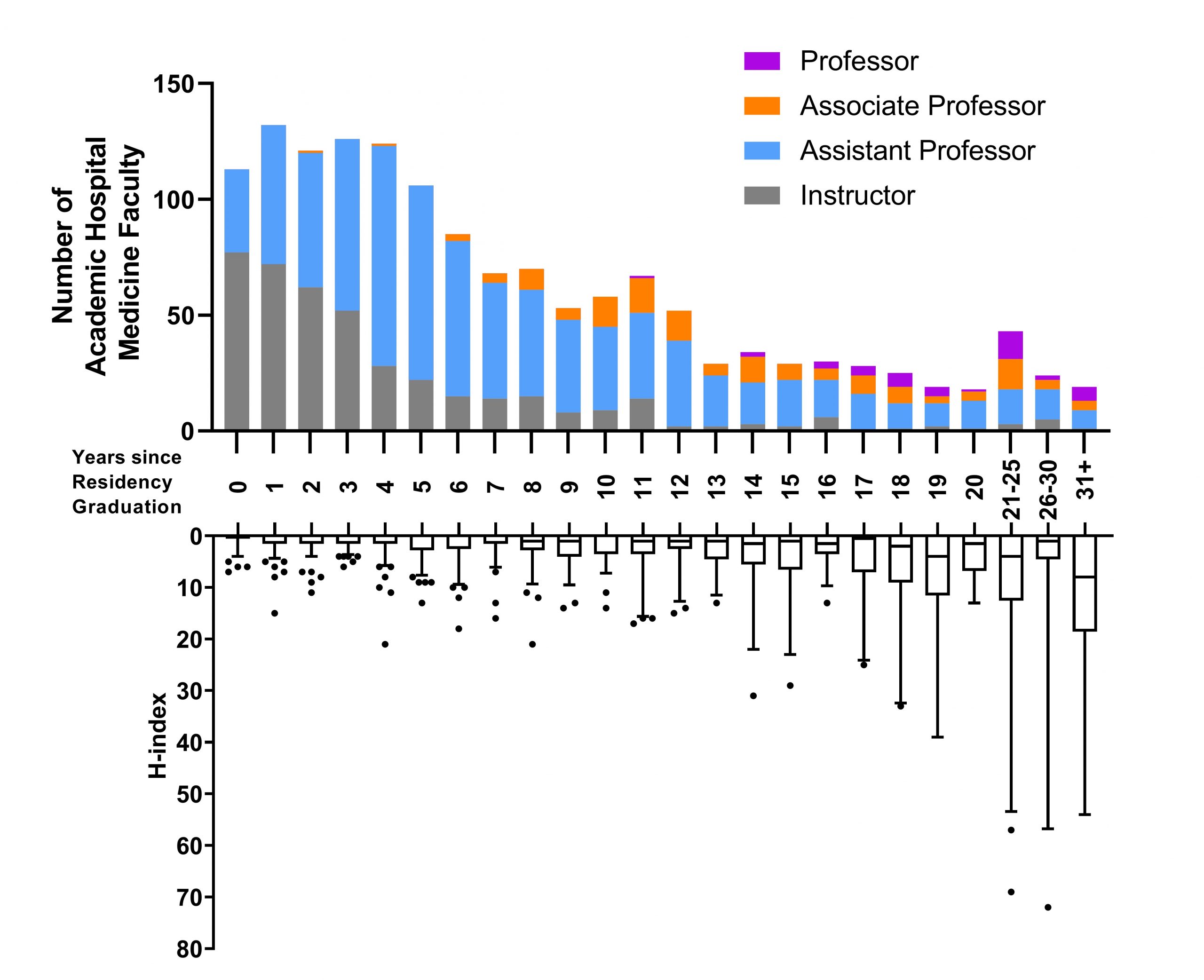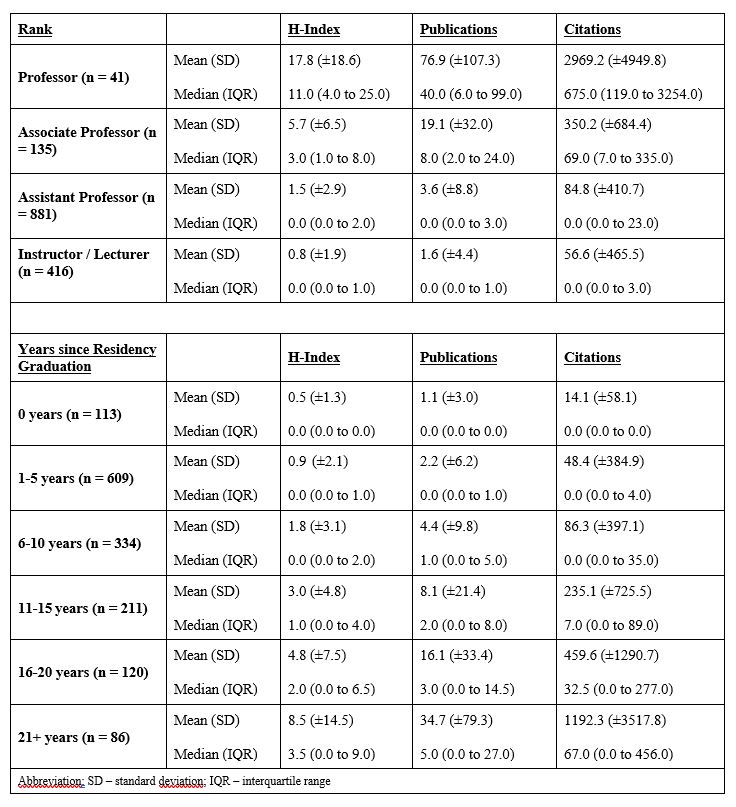Background: Despite a rapid increase in academic hospitalists, faculty development in academic hospital medicine remains an ongoing challenge. We aim to describe scholarly output and demographics in relation to academic rank distribution and to identify factors associated with academic promotion of a national sample of academic hospital medicine programs.
Methods: We extracted demographic and academic rank data for each academic hospital medicine program’s faculty associated with a top twenty-five internal medicine residency program. Using the Scopus database, we obtained total publications and H-index of each faculty member. Descriptive statistics were used to determine central tendencies for scholarly productivity and demographic variables. Multivariate logistic regressions was used to determine factors associated with promotion.
Results: Our study included 1,473 hospitalists. The cohort was comprised of 2.8% full professors, 9.2% associate professors, 59.8% assistant professors, and 28.2% instructors/lecturers. Scholarly productivity was highly skewed. Median (IQR) publications were 0.0 (0.0-1.0) for instructors, 0.0 (0.0-3.0) for assistant professors, 8.0 (2.0-24.0) for associate professors and 40.0 (6.0-99.0) for professors. In our multivariate model, predictors of promotion included H-index, years post-residency graduation, completion of chief residency, and graduation from a top 25 medical school.
Conclusions: Scholarly productivity and promotion rates are low, as 51.9% of included academic hospital medicine faculty were without a single publication and only 12.0% of academic hospitalists had been promoted to associate or full professor. Faculty development remains a challenge for clinically burdened academic hospitalists. Improving scholarly environments, expanding definitions of “scholarship”, and evolving promotion criteria may be indicated.


